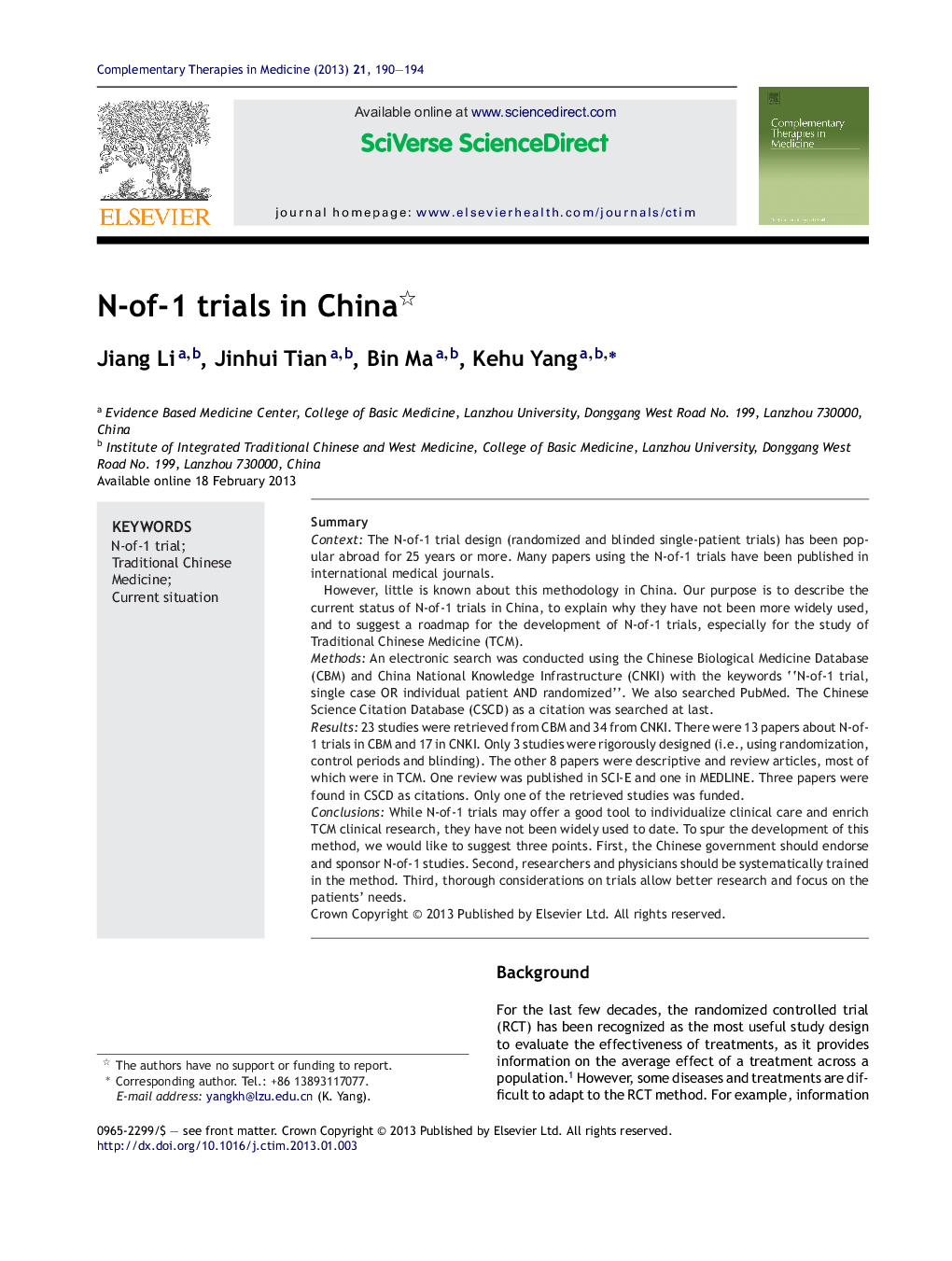| Article ID | Journal | Published Year | Pages | File Type |
|---|---|---|---|---|
| 2628891 | Complementary Therapies in Medicine | 2013 | 5 Pages |
SummaryContextThe N-of-1 trial design (randomized and blinded single-patient trials) has been popular abroad for 25 years or more. Many papers using the N-of-1 trials have been published in international medical journals.However, little is known about this methodology in China. Our purpose is to describe the current status of N-of-1 trials in China, to explain why they have not been more widely used, and to suggest a roadmap for the development of N-of-1 trials, especially for the study of Traditional Chinese Medicine (TCM).MethodsAn electronic search was conducted using the Chinese Biological Medicine Database (CBM) and China National Knowledge Infrastructure (CNKI) with the keywords “N-of-1 trial, single case OR individual patient AND randomized”. We also searched PubMed. The Chinese Science Citation Database (CSCD) as a citation was searched at last.Results23 studies were retrieved from CBM and 34 from CNKI. There were 13 papers about N-of-1 trials in CBM and 17 in CNKI. Only 3 studies were rigorously designed (i.e., using randomization, control periods and blinding). The other 8 papers were descriptive and review articles, most of which were in TCM. One review was published in SCI-E and one in MEDLINE. Three papers were found in CSCD as citations. Only one of the retrieved studies was funded.ConclusionsWhile N-of-1 trials may offer a good tool to individualize clinical care and enrich TCM clinical research, they have not been widely used to date. To spur the development of this method, we would like to suggest three points. First, the Chinese government should endorse and sponsor N-of-1 studies. Second, researchers and physicians should be systematically trained in the method. Third, thorough considerations on trials allow better research and focus on the patients’ needs.
